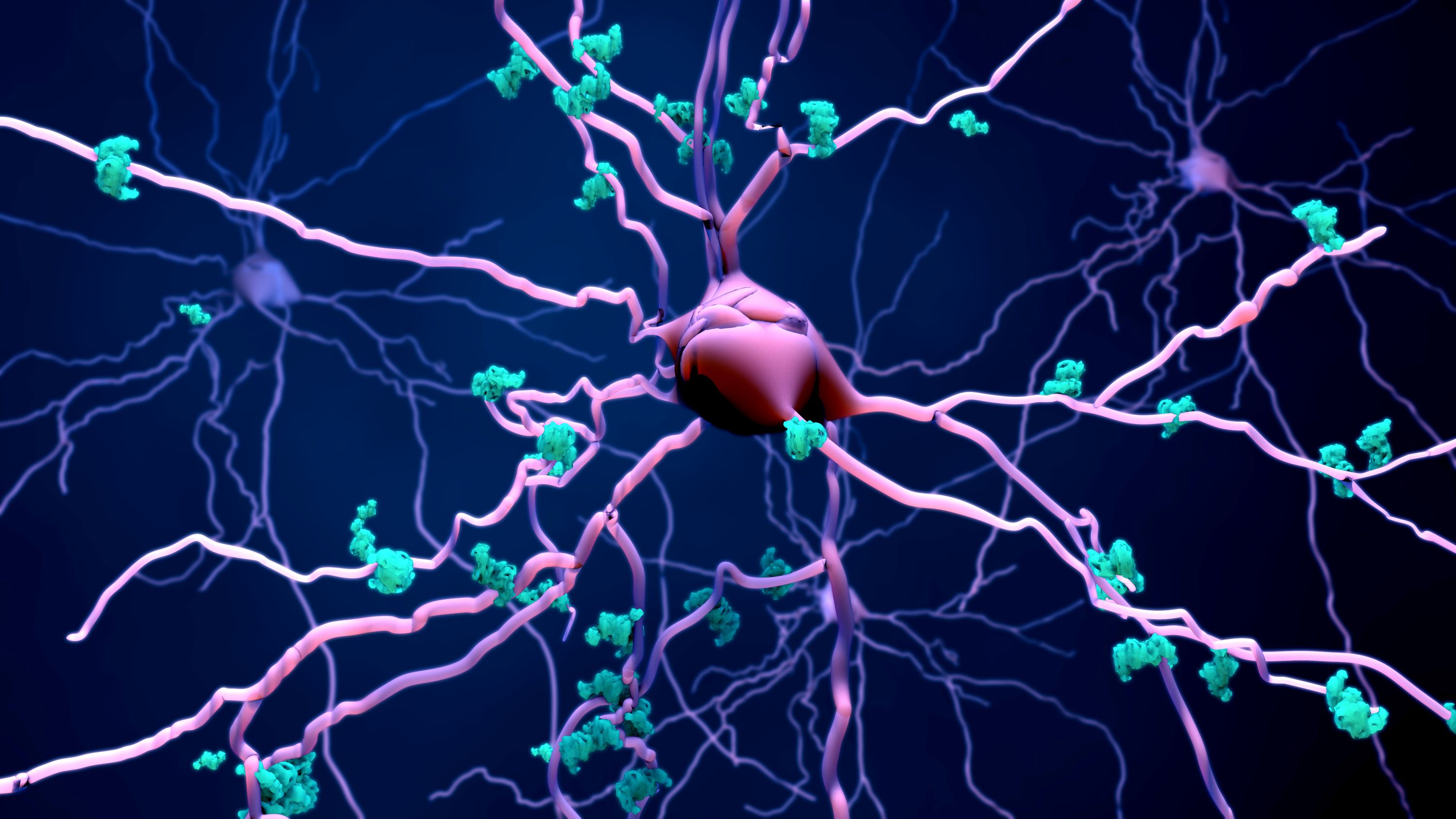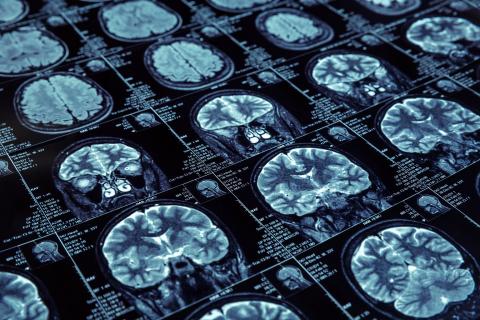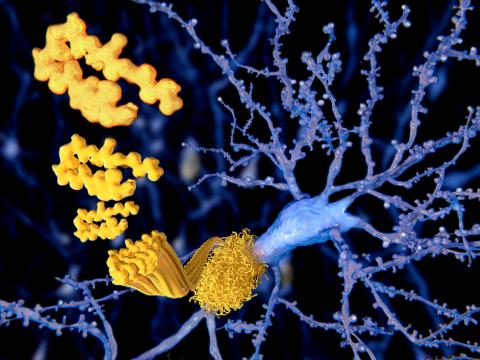Reactions: Spanish researchers propose new genetic form of Alzheimer's disease
Genetic forms of Alzheimer's are considered to be those in which certain variants of a gene inevitably lead to the disease over time. Until now, only rare alterations in three genes were considered as such. A group of researchers led by the Hospital de Sant Pau in Barcelona has proposed a new, much more frequent form. After analysing data from more than three thousand donated brains and clinical data from more than ten thousand patients, they found that almost all people who carry two copies of the ApoE4 variant in the ApoE gene, which was previously only considered a risk factor, also end up developing the disease.They publish the results in the journal Nature Medicine.

Eloy - apoe (EN)
Eloy Rodríguez Rodríguez
Head of the Neurology Department at the Marqués de Valdecilla-IDIVAL University Hospital and Associate Professor of Medicine in the Department of Medicine and Psychiatry at the University of Cantabria
The study is of very high quality. On the one hand, it involves a large collaborative effort, with five large clinical cohorts and one cohort with anatomopathological data (autopsy evidence of Alzheimer's disease), which is not easy. On the other hand, taking on the idea of autosomal semi-dominant inheritance, gathering a population of this size to demonstrate it (the percentage of e4 homozygotes in the general population is very low) and giving it the appropriate statistical approach (as if it were hereditary Alzheimer's disease) reflect an undeniable originality, tenacity, scientific quality and capacity for effort.
The fact that e4 homozygotes have a very high probability of Alzheimer's is nothing new, we have known it for years and we see it in our practices. Until now, there were no data on large population sizes (as they have a low frequency, in the usual studies they are analysed jointly with heterozygotes, with the population analysed in this study this is exceeded) nor were the data analysed with the necessary approach to assess this aspect (this is the most original aspect of the study, how they approach the problem and carry out the analyses with the strategy of hereditary Alzheimer's cases). The study provides solid evidence to change the conceptual framework: we move from thinking of e4 homozygotes as a risk factor to considering it as a determinant of the disease.
The implications are important. We are entering an era in which drugs with a potential disease-modifying effect on Alzheimer's disease are beginning to arrive, fundamentally on cerebral amyloid accumulation, which is universal in e4 subjects and an early phenomenon (as early as the 40s). Perhaps, in the near future, these subjects may be candidates for population screening to treat them from a very early age, avoid this accumulation of beta-amyloid and delay/prevent the disease. In addition, there is preliminary evidence of drugs that can block the effect of ApoE e4, making them an ideal population to test.
The main limitation of the study is already mentioned by the authors in the article. It is a cross-sectional study, bringing together different cohorts, which gives heterogeneity. In addition, there is an overrepresentation of subjects of European-Caucasian origin, which limits the extension of these findings to other populations (it is known that the effect of ApoE is different between races or human populations). Longitudinal population-based studies are needed to confirm these findings.
"I collaborate on some projects with Dr. Fortea and several of the authors of the paper. In addition, I have advised some laboratories on expert panels, mainly on treatment strategies for Alzheimer's disease (none related to Apoe)".
Jordi Pérez Tur - genes alzhéimer EN
Jordi Pérez-Tur
Research scientist at the Public Research Organisation (PRO) at the Institute of Biomedicine of Valencia of the Spanish National Research Council (CSIC)
What do you think of the study?
‘It is a solid study, the result of an exhaustive work carried out on a large number of patients for whom a very important and systematised amount of biochemical, genetic and clinical information was available. This makes the results of high interest per se, irrespective of their interpretation (which is also the case). One of the fundamental limitations in the study of even the most common diseases lies in the difficulty of having well-characterised patient cohorts of sufficient size for the findings to be statistically significant. The latter is very important; a finding can be anecdotal and the scientific method establishes a working methodology that serves to discriminate the anecdotal from the general and thus advance knowledge.
How does it fit with the existing evidence and what is new about it?
‘That the E4 allele is a factor related to Alzheimer's disease (AD) is not new in itself. We have known for more than 30 years that having one or two E4 alleles in our genome increases the risk of developing AD in later life. Furthermore, we knew that the number of copies of the E4 allele (1 or 2) was related to the age at which the disease appears, earlier with two copies than with one, and also to the number of characteristic AD lesions, the senile plaques. Individuals with two alleles had more of these lesions (called senile plaques). In other words, we knew that having two alleles was ‘bad’ from the point of view of AD development. But there were cases of individuals with two copies of the bad allele who did not develop AD despite living to very old ages, which seemed to support the idea that the E4 allele of APOE was a risk factor, i.e. a predisposing factor for the disease but not its cause.
This work, through the analysis of a large number of patients, demonstrates that having two copies of the E4 allele can be considered a new genetic form of AD, adding to the already known forms caused by genetic variants. In other words, APP, PSEN1 and PSEN2 are added as genes responsible for familial forms of AD. In other words, it aims to change the existing paradigm in which having two copies of the E4 allele increased the probability of having AD to a new one in which having these two copies implies developing the disease with certainty.
This should be taken with some caution as there are still a number of individuals who do not follow this direct relationship: individuals who have two copies of the E4 allele but who neither develop the disease nor show signs of developing it. In other words, the existence of individuals homozygous for the E4 allele without AD seems to run counter to the conclusion reached in the previous paragraph. However, contrary to the generally held perception, being a carrier of a genetic variant that causes a disease does not always mean that the disease will manifest itself. There are many genetic diseases in which certain carriers of the disease-causing variant escape the disease. This, known as reduced penetrance, cannot be ruled out in these cases.
Are there any important limitations to consider?
‘The article does not include the degree of familial aggregation that this phenotype may have, i.e. it does not answer the question to what extent this disease runs in families. The frequency with which the E4 allele appears in the population is sufficient for more individuals with the same disease to appear in several of the families to which the individuals studied by the authors and carriers of the E4 allele belong. On the other hand, there are families with late-onset AD in which certain affected individuals are homozygous for the E4 allele while others are heterozygous. In other words, the disease appears with a certain independence of phenotype.
But what may be the main limitation of the study is that it establishes a causal relationship between being a carrier of two alleles of the APOE gene and the appearance of AD, but ignores the fact that a person's genome contains some 20,000 variants with respect to the reference genome and that, overall, there are some 3,000,000 positions in the genome (out of the 3,000 million bases contained in the human genome) where genetic variants may exist, some of which could contribute in part to the effect observed. This is not to deny what is a clear and indisputable result of the study, that having two copies of the E4 allele results in an earlier onset of AD and with biomarker levels also reaching abnormal levels earlier than those without any copies of this allele, and that this effect resembles that seen in familial forms, but I think it is unclear to what extent it can be considered a causal factor. Especially since there are other genetic variants in the region where APOE is located which also seem to influence the onset of the disease and which are often associated with the E4 allele.
In conclusion, this work represents a clear advance in the study of the causes of AD as it puts the focus on a cause that, although it had not been ignored until now, had not received the attention that it was possibly necessary for the development of new therapies and also for the design of the therapeutic trials that could be carried out, given that what until now was considered as just another variable should be considered, in the light of these results, as a criterion for defining the groups and the strategies to be applied’.
Morató - apoe (EN)
Xavier Morató
Director of Clinical Trials at Ace Alzheimer Center Barcelona
An important point to note is that:
1. Monoclonal antibodies to beta-amyloid generate a large number of adverse effects in these patients, making it difficult to determine the benefit/risk balance.
2. There are molecules in development specifically for the ApoE 4/4 population; a phase 3 clinical trial is currently underway with results due by the end of 2024.
paul - apoe (E)
Paul Matthews
Director of The Rosalind Franklin Institute and Group Leader, UK Dementia Research Institute Centre at Imperial College
This report provides new, strong data showing that inheritance of two copies of the APOE4 gene is a cause of Alzheimer’s disease. The results force a change in thinking of APOE4 simply as a risk factor for Alzheimer’s. As 2 of 100 Northern Europeans carry two copies of the gene, the authors highlight that this discovery makes APOE4 Alzheimer’s Disease one of the most common of all Mendelian genetic disorders.
One implication of this work is that testing for APOE4 gene homozygosity should be assessed for use clinically when late middle-aged people present to their doctors with symptoms of dementia. Because APOE4 homozygotes are common in the population, have predictable ages of onset and rates of progression of disease and, as demonstrated in the paper, show easy to measure biomarker changes as their disease evolves, they also constitute an attractive population for clinical trials of new treatments for Alzheimer’s disease.
"Consultancies with Sudo Biosciences, Nimbus, Redburn. Member of Trial Safety Monitoring Board for GSK Research. Funding from Merck, BMS and Biogen".
Curtis - apoe (EN)
David Curtis
Honorary Professor, UCL Genetics Institute, UCL.
I do not see anything in this paper to justify the claim that carrying two copies of APOE4 represents some "distinct genetic form" of Alzheimer's disease. It has been known for decades that APOE4 is a strong risk factor for Alzheimer's disease, that people carrying two copies are at high risk and that people carrying two copies are at substantially higher risk than those carrying one. No matter how many alleles of APOE4 one carries the underlying disease processes seem similar across cases of Alzheimer's disease, suggesting that any effective treatment and prevention strategies, which have yet to be developed, would have broad applicability.
Tara - apoe (EN)
Tara Spires-Jones
Director of the Centre for Discovery Brain Sciences at the University of Edinburgh, Group Leader in the UK Dementia Research Institute, and Past President of the British Neuroscience Association
This study by Dr Fortea and colleagues in Barcelona looked at data from over 10,000 individuals and observed that almost everyone in the study who inherited two copies of the APOE4 gene had Alzheimer’s disease as they aged. This is a strong study confirming an important link between APOE4 and Alzheimer’s; however it is not at all a surprise. The increased risk of Alzheimer’s disease with inheriting the APOE4 gene has been known for over 30 years. This study adds compelling data to suggest that people with 2 copies of this gene are almost guaranteed to develop Alzheimer’s if they live long enough and that they will develop Alzheimer’s earlier than people without this gene. Moving forward, this study and others highlight the importance of more fundamental research into understanding how genes change the susceptibility of our brains to Alzheimer’s disease as we age.
"I have no direct conflicts with this study but have co-authored papers with one of the authors in the past".
Fortea et al.
- Research article
- Peer reviewed
- Observational study
- People



